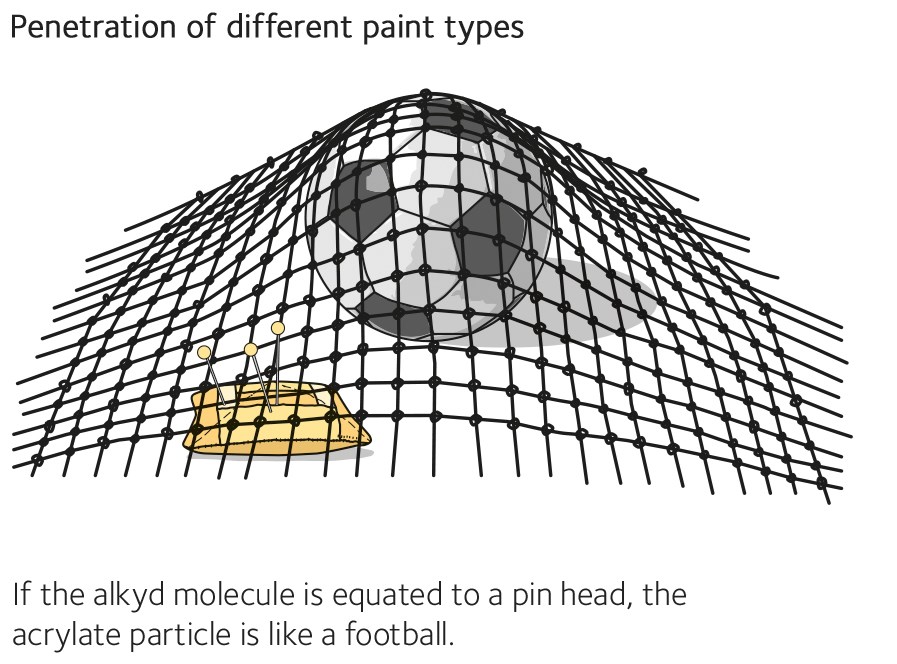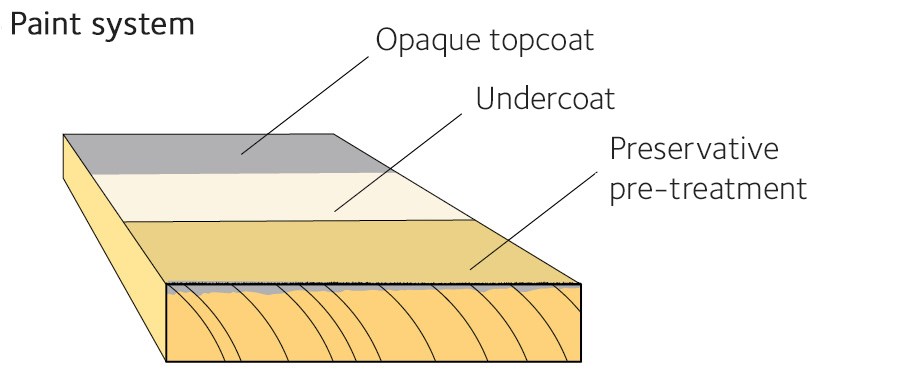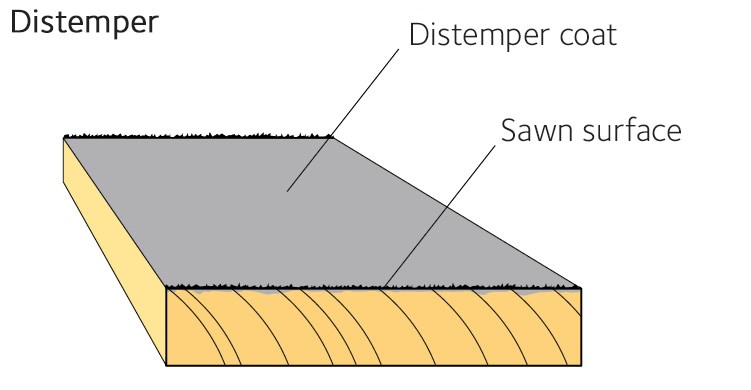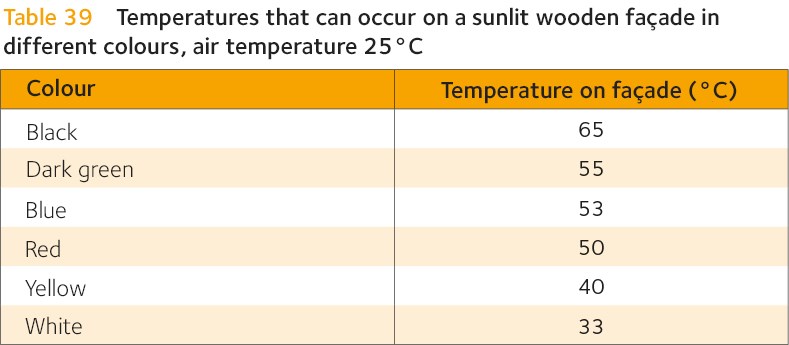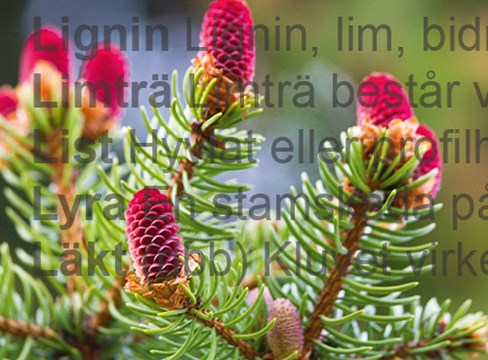Surface treatment of exterior wood
Choosing a paint type for exterior painting
Untreated wood surfaces will age/degrade over time. Dark woods will lighten and pale woods will darken. These changes do not occur evenly; aspect, exposure, location indoors or outdoors and so on can cause colour differences. An untreated wood façade can weather to a range of shades from almost white to almost black.
Treated wood surfaces age differently, depending on the surface treatment’s ability to protect the wood against decay. Under a layer of paint (solid opaque colour), the wood can remain entirely unaffected, while the wood under a pigmented wood stain may begin to age after just a few years.
Therefore, the choice of coating has a major impact on maintenance intervals. Paint may be chosen for a particular colour, but also for its protection against weathering.
The durability of the surface treatment depends on various factors, including the quality of the wood substrate and the stresses to which the surface treatment is subjected.
Paint adheres better to a fine sawn surface than to a planed surface, although with modern paints the difference is minimal. The surface treatment adheres better to newly manufactured and unexposed wood; when wood surfaces have been exposed to sun and rain, they begin to break down and can be subject to contaminants that adversely affect the adhesion of the surface treatment.
It is preferable to have your wood factory-finished, as this will give the best durability of both the wood and the surface finish. Where this is not possible, wood that is to be painted on the construction site should be primed/undercoated on installation, and finished with a topcoat as soon as is practically possible to offer protection against weathering. When painting, the surface moisture content should not exceed 16 percent. This also applies to pressure treated wood.
Technical advances and environmental requirements have led to a continuous development of paints and paint systems. Older paint types, such as distemper and linseed oil paint, are still in use, although newer technologically advanced paint systems account for the majority of the treatments used today.
The choice of the best treatment depends on the desired functionality and the look of the end result. Sometimes, the substrate to be treated can limit the choice of paint type. Fresh painting or maintenance of an older treatment can prompt very different choices. The various paint types can be divided according to:
- Film formation, i.e. whether the paint forms a closed film on the surface; how thick the layer of paint is; how much of the substrate is visible through the coating; and how well the paint layer prevents decay of the substrate.
- Binder, the main constituent of the paint and what forms the paint layer once the diluent has evaporated. The binder determines how well the paint layer bonds to the substrate.
- Diluent, environmental requirements have led to solvent-based diluents being replaced by water in most paint types. This has also led to paint types that previously would not have been mixed together; these are known as hybrid paints.
Some new types of exterior cladding have been developed to provide a stable substrate that improves the service life of the paint treatment. The cladding may also have been prepared with a quality assured primer/undercoat of the right thickness - at least 60 µm (micrometres) -to make sure that the substrate does not deteriorate before any future treatment occurs.
Oils and clear varnishes
Unpigmented oil and clear varnish are non-film-forming, or have a very low film build. These finishes allow the character of the wood to be clearly visible, but offer little or no UV protection, and the wood will discolour naturally as it ages. Oils that contain wax should be avoided if the surface is to be painted in the future.
Wood stains
Wood stains are non-film-forming, or have a very low film build, and have a low pigment content that allows the character of the wood to be clearly visible. The colour is determined by the colour of the stain coupled with the colour of the wood. This means that it is hard to retain the colour when carrying out maintenance of the finish and frequent reapplication will be required.
Translucent coatings
Translucent coatings give a paint-like film finish, but still allow the character of the wood to be clearly visible. The colour is determined by the initial colour of the timber and the coating. Depending on the colour and location, maintenance of the topcoat will be required every 3–6 years to keep the colour as new, and the wood fully protected.
Opaque paint
Opaque paint has a high pigment content and gives the optimum film build to provide long lasting protection for the surface of the wood. Opaque paint shows none of the wood’s colour, and little, if any, of the character of the wood.
Types of binder
The most common binders for painting wood are acrylics, alkyd oils, linseed oil, rye flour and wheat flour. These also occur in combination.
Acrylics: Acrylics refers to polymers of acrylic acid esters and acrylic acid. These polymers are dispersed in water to form a dispersion – a liquid with small suspended particles. They are used as a binder, hence the use of the term dispersion paints. Combining different acrylic acid esters can produce acrylic binders with different properties. See also Glossary.
Alkyds: Alkyds are polymers (synthetic resins) that are used as a binder in solvent-based and water-based paints. Adjusting the composition of the constituent substances in the alkyd can produce widely differing properties. See also Glossary.
Linseed oil: Linseed oil is oil pressed from the seeds of the flax plant. Linseed oil is used as a binder in traditional paint manufacture and has extremely small molecules, providing good protection against moisture. The linseed oil should be cold-pressed – raw or boiled. Linseed oil oxidises in contact with the oxygen in the air under mild conditions, with a drying time of one or two days. Linseed standoil is a linseed oil that has been heat-treated for a higher viscosity (larger molecules). Linseed standoil generally has high gloss and excellent weather resistance. In addition to linseed oil, the paint contains other components that, to varying degrees, affect its drying capacity and final properties.
Rye and wheat flour: Distemper has a binder made up largely of starch adhesive. In traditional distemper, the binder tended to comprise rye flour adhesive, casein, liquid potassium silicate, resin, linseed oil, whale oil or herring brine. The diluent was water. Iron sulphate was also usually included. Nowadays, distemper is mainly made up of pigment, rye or wheat flour, linseed oil and iron sulphate, suspended in water.
Paint diluent
The most common diluents in exterior paint are water and white spirit. The task of the diluent is to give the paint the right painting properties. Traditionally, oil and alkyd paints have used white spirit, and acrylics have been water-based. But today it is increasingly common to see water-based oil and alkyd paints, known as hybrid paints. The reasons for this relate to human health and the environment. White spirit is in the process of being phased out as a paint diluent, primarily on environmental grounds.
Most common paint types
Paints are usually described according to the type of binder they contain. Binders and various additives give the paints the properties that make them suitable for particular applications.
Acrylic paint
Acrylic paint requires the least maintenance of all exterior paints, since it does not crack or go chalky. It dries quickly and also retains its colour well. Acrylic paint is easy to apply and once dry, gives a rich, water-resistant finish. The drying time is 2–4 hours. Acrylics are used primarily for translucent coatings and opaque paints for wood façades, as part of a system with a primer. The microporous surface structure of acrylic paint can make it more susceptible to dirt pick up, compared with linseed paint or alkyd paint. Acrylic paints are water-based and may comprise only acrylic or a blend of acrylic and alkyd or polyurethane. They require a painting temperature of between 7°C and 25°C and must be stored in a frost-free environment.
Alkyd paint
Alkyd paint is closely related to linseed oil paint but dries more quickly, retains its gloss better and is more durable. The paint dries to form a rich and water-resistant surface. Alkyd paint is suitable for treating exterior wood.
Alkyd paints continue to crosslink once they have cured, and this causes the surface to embrittle, crack, and turn chalky after a few years, giving a matt and slightly paler finish. The drying time can exceed 24 hours even when applied at a warm time of year. Alkyds may be used in all paint types: wood stains, translucent coatings and opaque paints. Alkyd paints are predominantly solvent-based; however today there are water-based hybrid products. They require a painting temperature of between 7°C and 25°C and must be stored in a frost-free environment.
Linseed oil paint
Linseed oil paint is used to maintain buildings, often period buildings, that have previously had such paint applied, but sometimes also to paint new surfaces. It is made up of linseed oil and pigment. The linseed oil should be cold-pressed and boiled, perhaps with an added siccative. Linseed oil should be applied in several thin coats with good drying between the coats. Linseed oil paint is suitable for treating exterior wood. The paint gives a rich appearance, but the drying period makes it time-consuming. Linseed oil paints quickly turn chalky. Boiled linseed oil is used only for opaque paints. Linseed oil paints should not be overpainted with other paints, as there is a risk of blistering. Avoid painting in strong sunlight. Linseed oil is highly flammable and care should be taken with the disposal of application equipment.
Distemper
Distemper comprises a pigment suspended in water with rye and wheat flour and linseed oil (linseed oil content max 8 percent of the wet paint’s weight) as a binder. A distemper does not affect the wood’s ability to absorb and release water. Over time, the wood will crack in the same way as an unpainted surface. Due to poor adhesion, distemper cannot be used on planed surfaces. Distemper can thus only be used on sawn or fine sawn timber or surfaces previously painted with distemper. The paint is applied in thin coats and is easy to use. The drying time is around 1 hour. Distemper gives the building a fully matt, chalky surface that is sensitive to external influences, but is easy to maintain. When using light colours, resin deposits, knots and cracks show through clearly. Distemper is water-based and must be stored in a frost-free environment.
Other surface treatment methods
Wood oils
Wood oils are designed for use on wooden decking, for example, to provide a water-repellent effect. They often contain waxes, which make wood-oiled surfaces unsuitable for overpainting with other products. A special type of oil usually forms part of a paint system – penetrating priming oil. It is applied before undercoating.
Wood preservatives
Wood preservatives are used for structural elements and details that require protection from rot and where the timber is rated below class 3 BS EN 335-2. The treatments may be either applied topically or by pressure impregnation.
Wood tar
Iron sulphate
Undercoat penetration into wood
To achieve good penetration of the binder into the wood, the binder molecules must be smaller than the pores of the wood. It is important that the undercoat penetrates well to ensure good adhesion and protection against moisture.
The following illustration can help to explain the difference between alkyd paints and acrylic paints in terms of their ability to penetrate – be absorbed by – wood.
The figure to the right represents the size of an alkyd molecule in a solvent-based alkyd paint, the wood’s pores and an acrylate particle in an acrylic paint.
If the alkyd molecule is equated to a pin head, the acrylate particle is like a football. In this comparison, the wood’s pores are like a net with 20 mm openings. The illustration clearly shows that the alkyd molecule (the pin head) can easily make its way through the wood (the net) while the acrylate particle (the football) cannot.
Paint systems
Modern paints are based around several stages of treatment as part of a paint system. Each product in the system has been optimised to deliver the desired properties, so all the stages need to be completed in accordance with the manufacturer’s instructions.
Appropriate treatments in a paint system
Preservative pre-treatment
A preservative pre-treatment should be applied over the entire surface that is going to be painted. The pre-treatment goes deep into the wood and reduces moisture absorption and protects against rot. See the section Measuring average moisture content and surface moisture content on how to check the surface moisture content.
Undercoating/Priming
After the preservative comes the undercoat primer. This should be carried out on all surfaces, before installation. The purpose of the undercoat is to ensure good adhesion for the topcoat, and to further reduce moisture absorption. When undercoating, the film thickness should be applied to the manufacturer’s advised film weights.
To achieve good durability from the paint treatment, the wood should be undercoated before installation, in the case of industrial undercoating. It is possible to buy industrially primed/undercoated wood with an approved coating depth. It is not uncommon for suppliers’ transport protection against UV light (a thin film of paint) to be mistaken for a proper industrial treatment, which can lead to substandard painting results. Industrially primed/undercoated (opaque) cladding should have a film thickness, i.e. the amount of paint applied per square metre, of at least 60 μm when dry.
End-grain and joint sealing
It is particularly important the end-grain, construction and v joints, nail heads and pin holes are sealed before applying the topcoat.
Sanding
According to AMA Hus, raised fibres should be lightly sanded.This improves the quality of exterior façade painting and reduces the risk of discolouration due to dirt and mould growth. The façade surfaces will also be easier to clean and maintain, and more pleasant to touch.
Finishing with a topcoat
The type of paint for the topcoat is chosen based on the aesthetic and other properties required of the painted surface. Two coats are usually used for the best finish. Follow the paint manufacturer’s instructions.
![]() Table 38 Surface treatment of wood – example
Table 38 Surface treatment of wood – example
| pre-treatment | Undercoat | Topcoat | |
| Penetrating priming oil | Alkyd undercoat | 2 coats. Acrylic paint. | |
| Penetrating priming oil | Alkyd undercoat | 2 coats. Alkyd paint. | |
| Linseed oil undercoat (40 percent dilution of linseed oil paint) | Linseed oil undercoat (20 percent dilution of linseed oil paint) | Linseed oil paint, solvent-based | |
| Penetrating priming oil | Alkyd undercoat | 2 coats. Translucent coating | |
| - | Wood stain | Wood stain | |
| - | Distemper | Distemper |
Maintaining painted and stained surfaces
The maintenance interval for exterior treated wood varies according to the finish, the material, the design of the façade, the colour choice and the local climate. Depending on which direction they face, different façades will have to deal with different weather conditions, and should therefore be treated individually for the best results. Adapt the instructions for the painting work to the differing status of the façades so that every side of the façade has its needs met.
Exterior painted or translucent coated wood should be cleaned regularly to keep the surfaces clear and reduce the risk of dirt trapping moisture and speeding up decay. The cleaning frequency for exterior treated wood is determined mainly by the degree of dirt accumulating, microbial growth and moisture, which in turn depends on the geographic location and local conditions (exposure).
Table 39 Temperatures that can occur on a sunlit wooden façade in different colours, air temperature 25°C
| Colour | Temperature on façade (°C) |
| Black | 65 ⁰C |
| Dark green | 55 ⁰C |
| Blue | 53 ⁰C |
| Red | 50 ⁰C |
| Yellow | 40 ⁰C |
| White | 33 ⁰C |
Planned maintenance
In order to increase the durability of exterior treated wood, maintenance measures should be performed before the decay goes too far. Otherwise, it can become problematic and costly. Dark or bold paint layers may require shorter maintenance intervals.
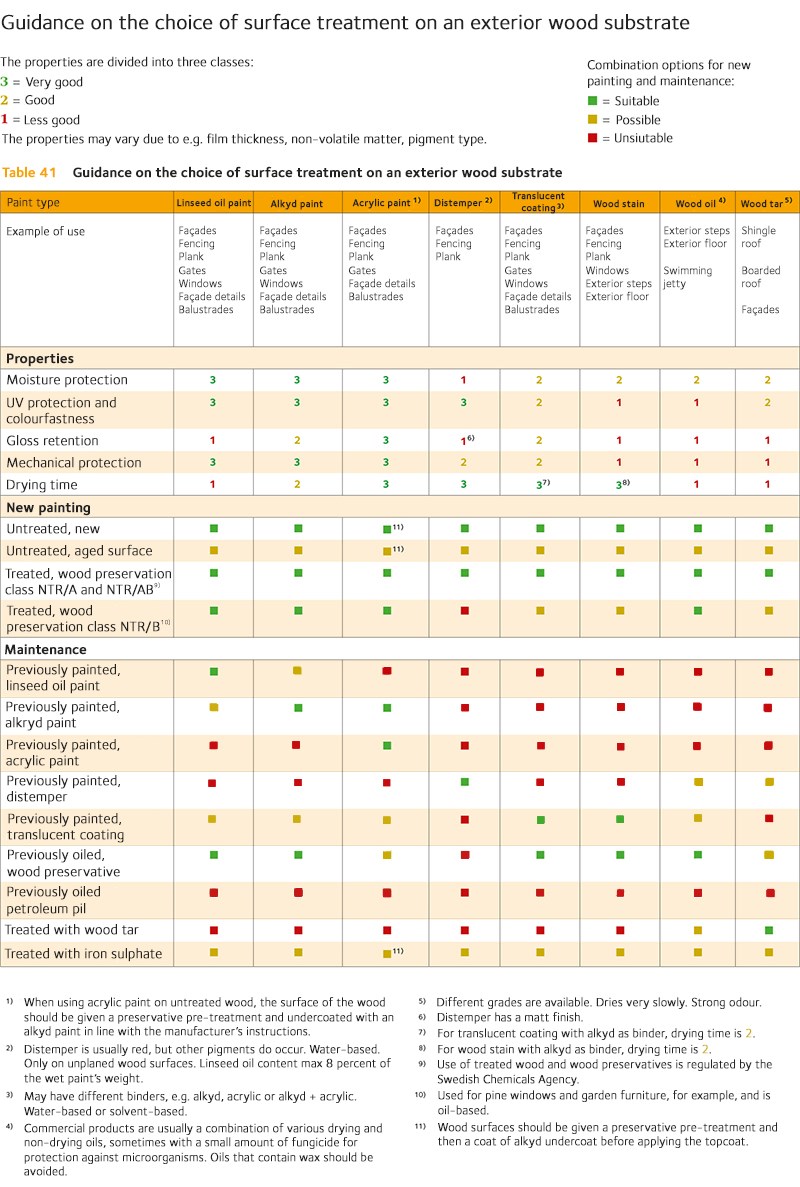



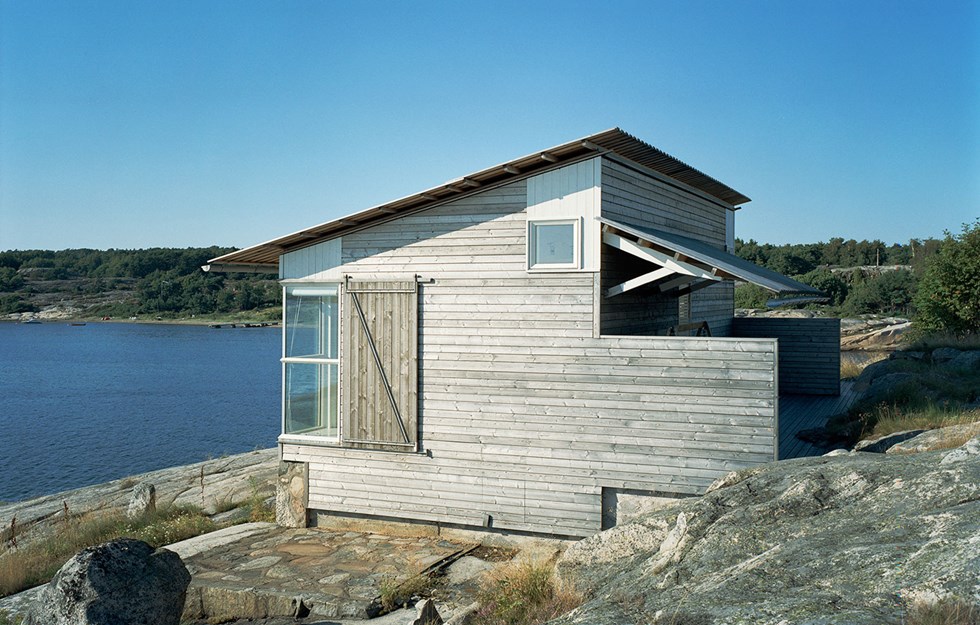
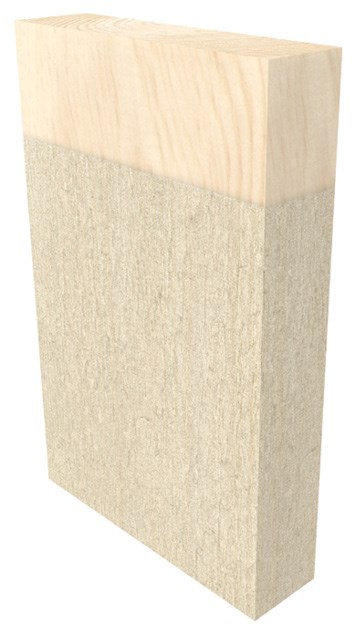
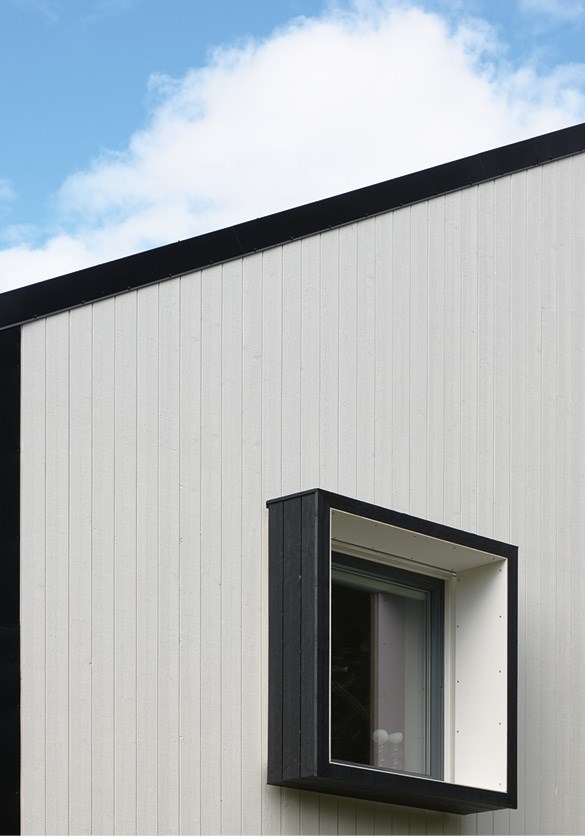 The cladding is treated with black and white oil paint. One Tonne Life, Hässelby, nominated for the Swedish Timber Prize 2012. Photo: Åke E:son Lindman.
The cladding is treated with black and white oil paint. One Tonne Life, Hässelby, nominated for the Swedish Timber Prize 2012. Photo: Åke E:son Lindman.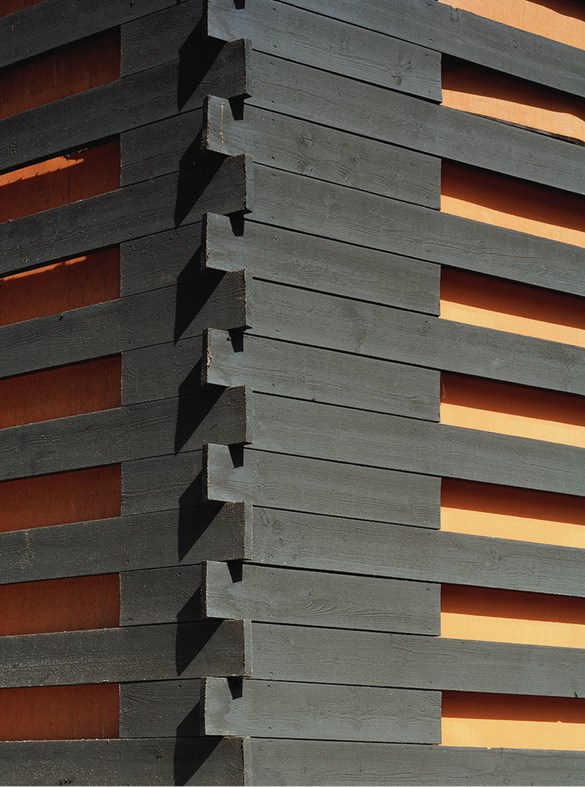 The façade is treated with a black translucent coating. Löhammar Barn, Östhammar, nominated for the Swedish Timber Prize 2008. Photo: Åke E:son Lindman.
The façade is treated with a black translucent coating. Löhammar Barn, Östhammar, nominated for the Swedish Timber Prize 2008. Photo: Åke E:son Lindman.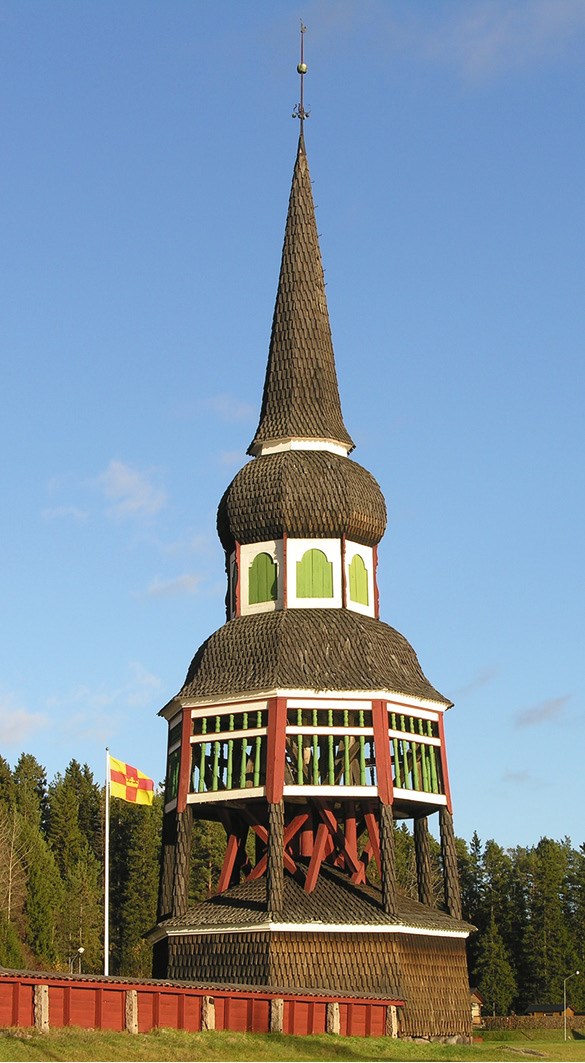 Bell tower in Älvros. Tar, red distemper and oil paint. Photo: Per Bergkvist.
Bell tower in Älvros. Tar, red distemper and oil paint. Photo: Per Bergkvist.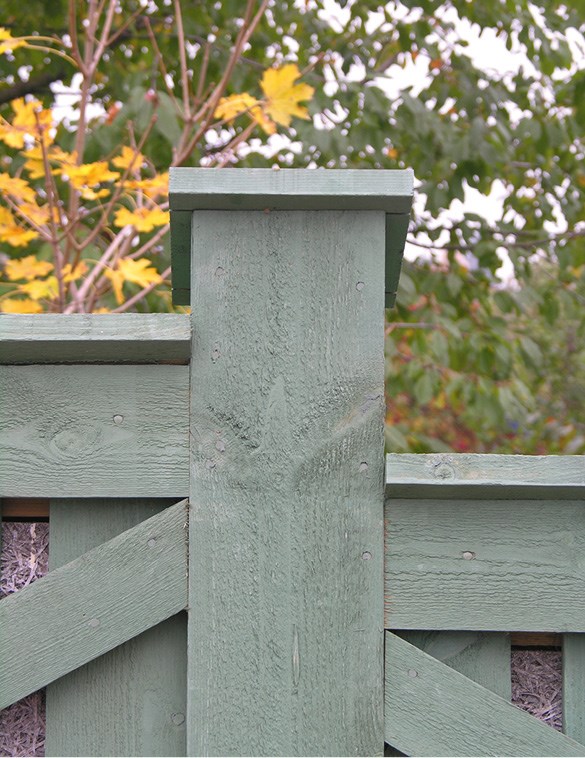 Oil-based wood stain on noise barrier, Ekerö. Photo: Per Bergkvist.
Oil-based wood stain on noise barrier, Ekerö. Photo: Per Bergkvist.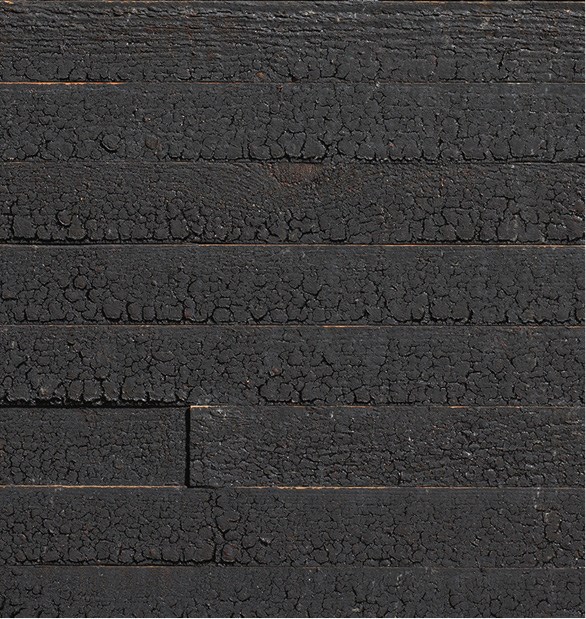 Wood tar. Tomtebo forest sauna, Gävle, winner of the Swedish Timber Prize 2012. Photo: Åke E:son Lindman.
Wood tar. Tomtebo forest sauna, Gävle, winner of the Swedish Timber Prize 2012. Photo: Åke E:son Lindman.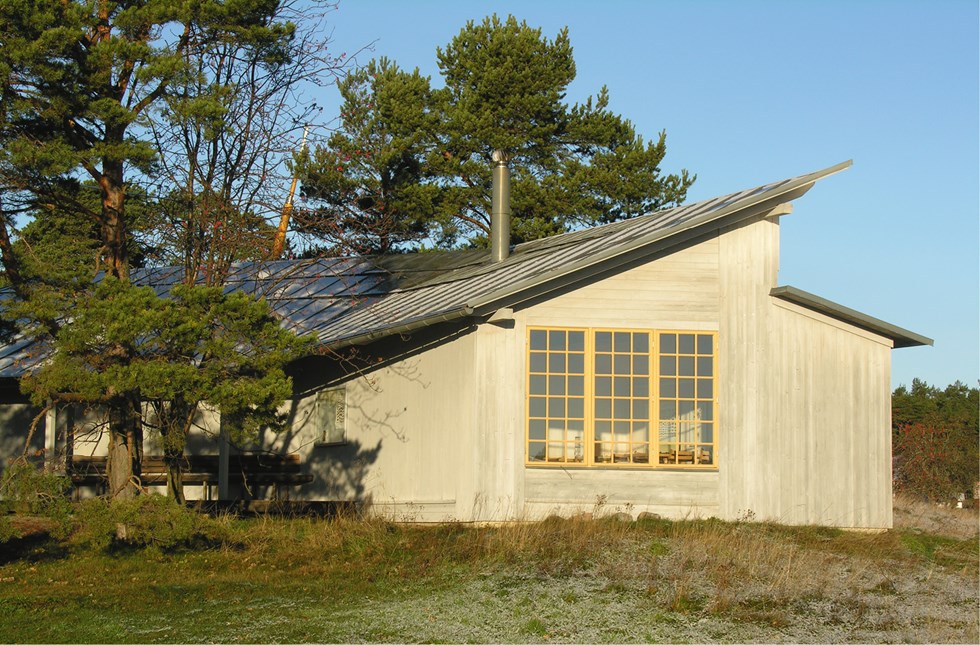 Grey distemper on Stendörrens Naturum. Photo: Per Bergkvist.
Grey distemper on Stendörrens Naturum. Photo: Per Bergkvist.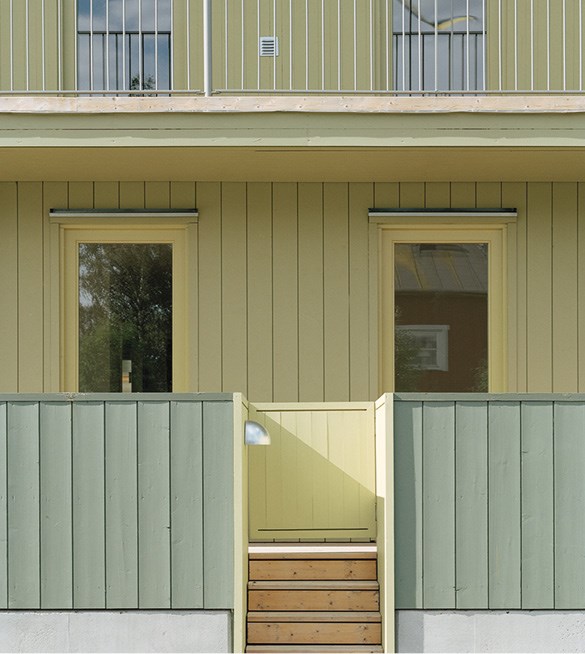 The façade is painted with alkyd paint. Fiskpigan development, Trosa, nominated for the Swedish Timber Prize 2008. Photo: Åke E:son Lindman.
The façade is painted with alkyd paint. Fiskpigan development, Trosa, nominated for the Swedish Timber Prize 2008. Photo: Åke E:son Lindman.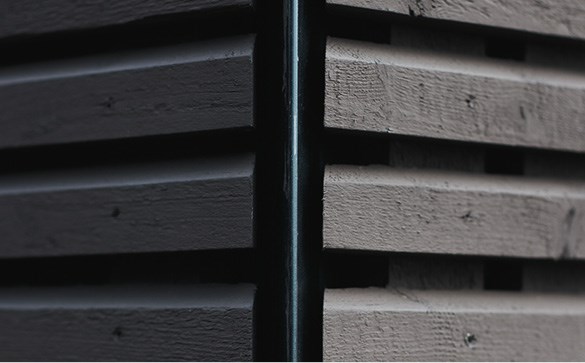 Distemper Falu black. Villa Nilsson, Höganäs, nominated for the Swedish Timber Prize 2012. Photo: Åke E:son Lindman.
Distemper Falu black. Villa Nilsson, Höganäs, nominated for the Swedish Timber Prize 2012. Photo: Åke E:son Lindman.